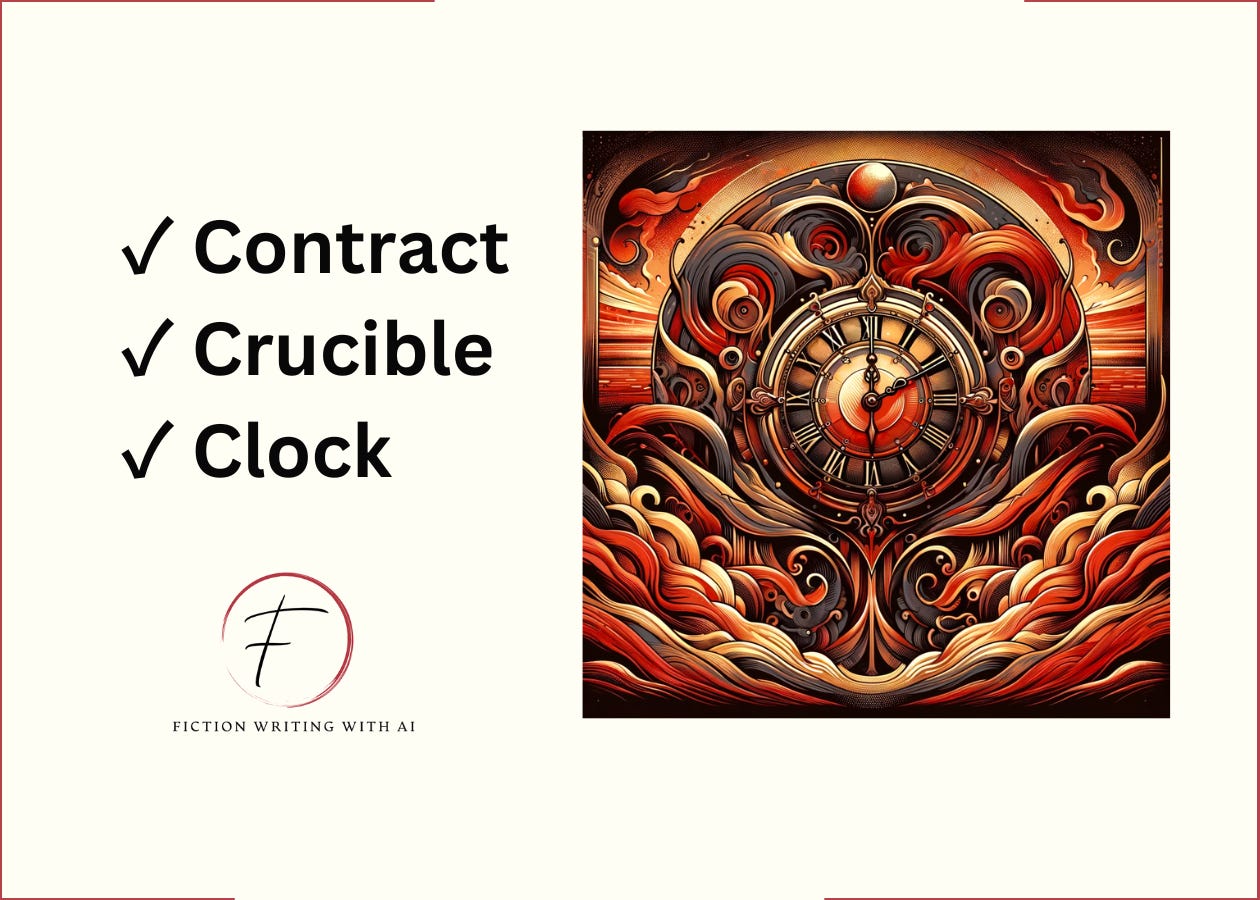Hey there!
Want to write a $250,000,000 best-selling thriller like Dan Brown?
All you have to do is follow his step-by-step process.
Draw the reader in with a Contract.
Keep them invested with a Crucible.
Hold them on the edge of their seat with a Clock.
Easy.
And today, we are going to show you how you can quickly generate story outlines based on Dan’s 3C Storytelling Framework: Contract, Crucible, Clock with ChatGPT to help you start turning your idea into a page-turning novel.
Let’s break it down.
Step 1: The Contract
A story is a contract between you and the reader.
Think about the opening scene of your favorite thriller. The author pits the hero against an impossible circumstance and then leaves you hanging—and begging to know what’s going to happen.
For example:
Will Jason Bourne recall his past? “The Bourne Identity”
Can Rachel stop the killer aboard the train? “The Girl On The Train”
Will Robert Langdon decode the mystery of the Holy Grail? “The DaVinci Code”
The question hooks the reader and pulls the narrative forward until you make good on the promise.
Why does this work? Because a strong Contract taps into the reader's curiosity, ensuring they're invested right from the start. And it doesn’t have to be a big idea. It only needs to open a loop in the reader’s mind and leave them wondering how does the hero get out of this.
So, for your story, what's the one single burning question that will keep your reader up and buried in their Kindle until 1AM (or later until you’ve answered their question)?
Step 2: The Crucible
Once you’ve nailed the question, the next step is to decide how you will make it difficult for the protagonist to get what they want.
This is the heart of your story.
What challenges and obstacles must be overcome?
What are the characters fears, desires, and weaknesses?
How do these struggles shape their journey?
Each obstacle tests and reveals your character’s true nature.
For example, in “The DaVinci Code,” Robert Langdon is wrapped up in ancient secrets and modern conspiracies. His crucible is the danger posed by those who want them concealed. He has to decode the mystery of the Holy Grail while staying one step ahead of peril which ultimately reveals his moral integrity, deep knowledge of religious history, and his sense of responsibility to uncover the truth.
In this step, your characters are forged in the fire of your plot—emerging stronger, or fundamentally changed.
Step 3: The Clock
Worried your story might never end or lose its edge?
The Clock is your answer.
It raises the stakes.
It accelerates the pace.
It puts the characters under pressure.
When you introduce a ticking time bomb, the reader has no choice but to sit on the edge of their seat waiting for the tension to subside.
Watch this scene from “The DaVinci Code” where the Clock is set.
Whether a literal or a metaphorical setting a Clock creates the sense of urgency that propels your narrative forward and keeps the stakes high. Your characters don't have the luxury of time, and neither do your readers.
As you build your story, think about what's at stake. What happens if your characters fail? The Clock is a constant reminder of the high stakes your characters are facing.
Now that you’ve got the 3C Storytelling Framework down, let’s speed up the process with ChatGPT.
Train ChatGPT To Generate An Outline Using The 3C Storytelling Framework
Start with any Sub-Genre like “Historical Romance,” “Sci-fi Western,” “Urban Fantasy,” etc., and auto-generate an outline that follows the 3C framework.
Run the following script:
Keep reading with a 7-day free trial
Subscribe to Fiction Writing With AI to keep reading this post and get 7 days of free access to the full post archives.




